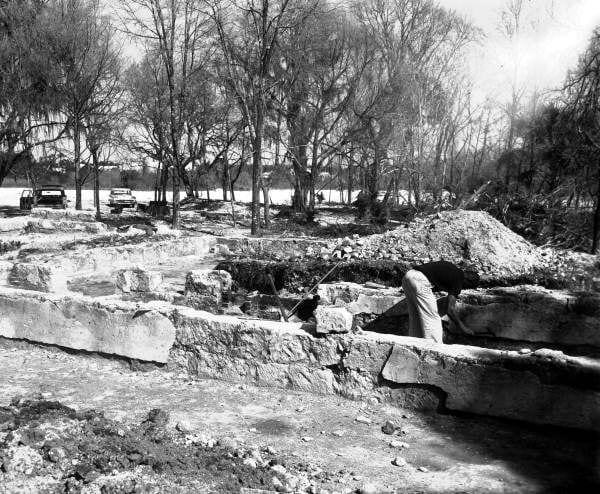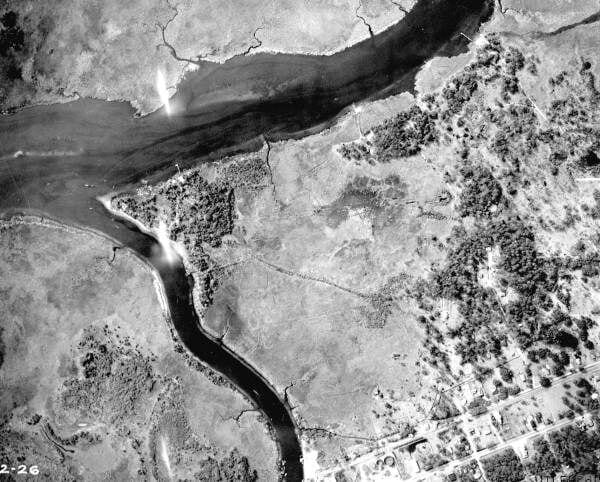Florida Waterways
“St. Marks River”
By Kevin McCarthy
CAPTIONS
The peaceful St. Marks River
An old fishing shack on the St. Marks
A map showing the river
St. Marks Lighthouse
Archaeologists working near St. Marks
Aerial view of the confluence of Wakulla and Saint Marks Rivers
A river that is modest in length, but long in history, is the St. Marks, running from Leon County to the east and south of Tallahassee. Classified by the Florida Department of Environmental Protection as an “Outstanding Florida Water,” the river joins the Wakulla River near the town of St. Marks and continues to the Gulf for another three miles, keeping its name even though it has absorbed the Wakulla. The 36-mile-long St. Marks has tidal effects for twelve miles from the Gulf, which means that fishermen can catch salt-water and fresh-water fish toward the river’s mouth.
Some famous Spanish explorers camped or explored the river, for example Panfilo de Narváez and Hernando de Soto, as well as American general Andrew Jackson, who seized a Spanish fort at the town of St. Marks in 1818, and hanged two British spies he caught there. One can visit a museum housed in a stone fort right by the river, a fort that was variously controlled by the Spanish, the English, Native Americans, federal forces, and Confederate soldiers.
Up toward Tallahassee, the river goes under a natural bridge, a place that saw in 1865 the Battle of Natural Bridge between Union and Confederate forces, the second-largest Civil War battle in Florida. In that battle Confederate troops, mostly teenagers and volunteers from a nearby military institute, stopped Union troops from seizing Tallahassee and thus keeping the city, the only Confederate state capital east of the Mississippi not captured by Union troops in the war. When the St. Marks disappears underground near the battle site, it becomes a subterranean river for about a half mile. The Tallahassee Railroad, which connected the Florida capital with St. Marks in the 1830s, is apparently the third oldest railroad in the whole country.
Near the mouth of the river, is St. Marks Lighthouse, built in 1831, rebuilt in 1842, and added to the National Register of Historic Places in 1972. The structure is the second oldest lighthouse in Florida, the oldest on the Gulf coast, and the only one in Florida with wooden stairs. It is on the north side of Apalachee Bay on the east side of the entrance to the river. The nearby St. Marks Wildlife Refuge consists of over 70,000 acres of wildlife habitat in the area and stretches along 45 miles of Florida gulf coastline. Visitors can see millions of monarch butterflies using the area as a stopover on their way to Mexico in September and October, and then see them there again in July when the butterflies stop on their way north.
The river, then, offers a lot for fishermen, historians, butterfly watchers, and anyone who likes peaceful surroundings with great views of nature.
Kevin McCarthy, the author of North Florida Waterways 2013 – (available at amazon.com), can be reached at ceyhankevin@gmail.com.






